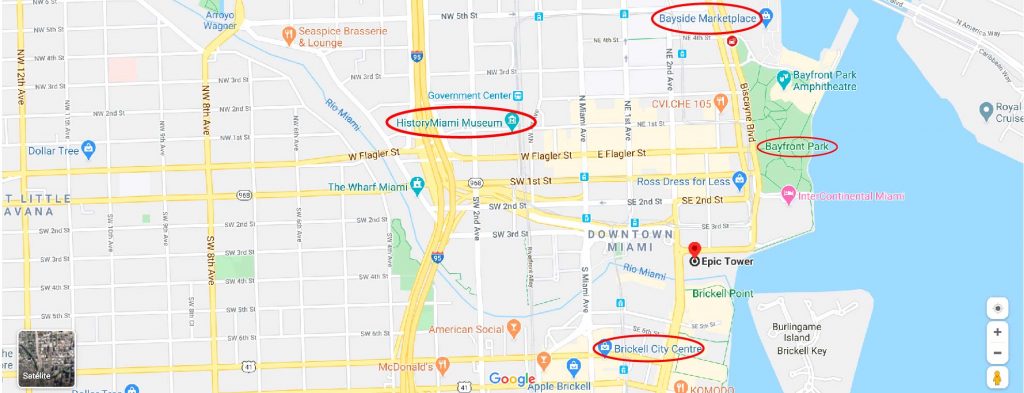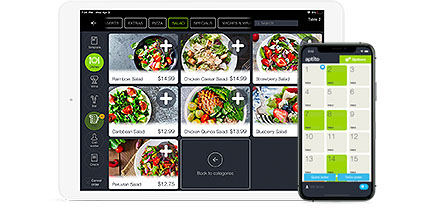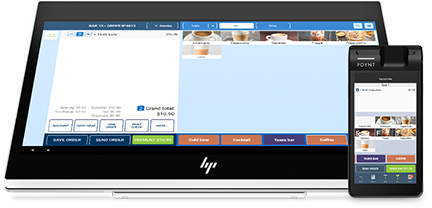
Opening a Bar in 2020: Everything You Need to Know24 min read
Are you thinking about starting your own bar? Not so fast. There’s a lot to consider. The reality is most new bars fail. We don’t bring this up to discourage you. In fact, the truth is, you absolutely can succeed in the bar business if you get off on the right foot.
In this guide, we’ll reveal what you should do to start your bar or restaurant the right way. Along the way, you’ll learn how to define your brand early on—which can give you a leg up on the competition—and you’ll learn to avoid nasty pitfalls.
Ready? Let’s go.
Before You Start…
A major limitation of most guides on starting or running a new bar is that they jump straight into the nuts and bolts. They go for the jugular, covering such topics as the business plan, demographics or point-of-sale system. These factors are important, to be sure, but you should start at a much more fundamental level. If you’re thinking about opening a bar or adding a bar to an existing restaurant, the place to begin is the brand brainstorming stage.
As you read through this list, think about what type of bar you want to create. What vibe do you want to set? What do you want to be known for in your community?
But first, what is a brand?
A lot of people, even branding consultants, struggle to answer that question. The simple definition is that a brand is a product or service made distinct from competing products by a name, design, symbol, term or other elements.
But this rather dry definition doesn’t tell you why you should spend your valuable time learning to create a strong brand, nor does it help you understand why you should invest in strong visual branding elements.
So let’s try this on for size:
A brand is mental real estate in the customer’s mind.
Think of any fast food brand.
Taco Bell.
Wendy’s.
McDonald’s.
When you read those names, it’s likely that their respective logos flash in your mind’s eye—or maybe you recall the company’s slogan. That’s the power of brand.
You have a strong brand when the public is aware of you, and when they think of you when they need a product that you sell. Think of these brands:
- Nike
- Coca-Cola
- Uber
These are incredibly strong brands. When consumers want quality shoes, they think of Nike. When they want to share a tasty beverage with a friend, they think of Coke. When they want to hail a ride, they think of Uber.
When starting your own bar, you should think of brand before all else.
Why?
Because your branding informs everything that follows.
According to the paper Why Restaurants Fail, by H.G. Parsa, of Cornell University, restaurant and bar failure rates are noticeably higher for small, independent operations. Compared to franchises, independent startups fail much more often. No surprise there. After all, a franchise leverages an established brand.

By starting out with brand strategy, you can give yourself a clear cut advantage over competitors who don’t.
#1 Brand Substance
Many budding entrepreneurs think that creating a brand is nothing more than having an eye-catching logo made, or else they think it’s enough to come up with a fancy name. Neither will differentiate you from the competition enough to ensure you succeed.
What you need is substance.
Brand substance is what sets you apart from the rest of the pack. It’s what makes you…you. It’s made up of several factors:

- Purpose. Why are you in business? Why did you choose to start a bar?
- Vision. Where do you want to be in 10 years? How many locations will you have?
- Mission. What do you want to achieve, aside from turning a profit? Note that helping people to relax and to have a good time is a valid mission.
- Values. What do you stand for? What do you believe in? Fun, good times and relaxation are all valid values. For an example, check out Coca-Cola’s branding and advertising.
#2 Brand Positioning
Brand positioning is a somewhat ephemeral concept, but an important one. When someone in your community wants to go to a bar or restaurant, they have several options. Why would they go to your bar? What makes you special?
Like brand substance, brand positioning is made up of several components:
- Audience. Who do you cater to? Who will like your service and/or product?
- Competitors. Who are your biggest competitors? Where are they located? What do they offer that you don’t?
- Difference. What makes you different from your biggest competitors? What makes you unique? What do you offer that they do not?
#3 Brand Expression
Now that you’ve thought a bit about brand substance and positioning, you’ll probably gain glimpses into how you might express yourself as a brand. Brand expression is made up of actions you take to communicate with customers and fans.
Your brand expression articulates the essence of who you are in a multi-sensory way.
It is composed of two primary elements:
- Personality. Who are you? What do you want customers to think about you? Your personality is expressed through marketing, social media posts, your blog, etc.
- Voice. You should season all of your messaging with your own unique voice. Don’t be bland.
#4 Communication
Once you’ve worked out the three above points, you can start to focus on the more concrete aspects of communication. To do this, you should develop a Core Messaging Framework and a Storytelling Framework.
Core Messaging Framework
Your CMF helps you quickly answer the question, “What do you do?”
Even if it’s obvious that you’re a restaurant or bar, you should be able to quickly answer the question in a way that differentiates you from the competition. This is crucial if you ever hope to seek outside funding, but it’s also important for your day-to-day operation.
Your CMF consists of the following:
- Unique value proposition & key benefits. This is the unique selling point of your product or service. It goes back to the work you did earlier. What makes you special? Why are you different? What sets you apart from the other eateries in your area that serve alcohol? In today’s competitive marketplace, it’s not enough to be just another bar.
What do customers get when they patronize your bar that they can’t get elsewhere?
- Elevator pitch. An elevator pitch is a 30 second response to the question, “So, what exactly do you do?” That means that, in 30 seconds—not 60, and certainly not 90—you should be able to rattle off your unique value proposition and key benefits in a clear manner that won’t need a lot of elaboration.
- Boilerplate. Your boilerplate is a two to three sentence description of who you are as an organization and what you do.
- Customer pain points. At any time, you should be able to tell a prospective investor, or anyone else, really, what your customer’s primary pain points are and how you solve them.
- Buyer personas. You should have several buyer personas written up. These are fictional biographies, but they can be based on real people. However, they should be representative of a large number of potential customers. A good buyer persona will help you home in on qualities and traits of people who could become regulars at your establishment.
Storytelling Framework
Think of any big brand, and you’ll think of stories that brand tells. Think of Coca-Cola and their polar bears. Nike and their athletes. Trulia and their What Locals Say campaign. Budweiser and their The Beer Behind the Music campaign. Effective brands tell gripping stories.
The secret sauce to storytelling is to have a hook as well as a narrative arc. Think of the above Coca-Cola polar bears commercial.
The hook: CGI polar bears who love soda.
The narrative arc: the hero of the story has to go through some turmoil before he can enjoy his soda.
A story must have:
- A hero
- A theme
- A beginning, middle and end
- A villain or antagonist
- Must start with an inciting incident
- Stakes must increase at the mid-point
- It must build to a climax
- When it comes to storytelling for marketing purposes, the hero must ultimately achieve their aim. No tragedies here.
The key is to create stories that relate to your customer’s pain points and your unique value proposition.
Craft brand stories that illustrate how you’re in a unique position to solve a specific problem. Need another example? See Dos Equis and their Most Interesting Man In The World campaign.
Where to tell stories:
- Your blog
- Your ads
- Your copy
- Your social media posts
Get this one aspect of brand strategy right and you’ll be far ahead of your local competitors.
Only after you’ve done the above legwork should you think about a logo, mascot or other elements of branding, much less tackle the items in the next list.
We know this seems like a lot of work up front, but it’s worth it.
Don’t just start a restaurant. Start your restaurant. Your investors, your family and even your customers will thank you for the branding work you do ahead of time.
As you read the following lists in this guide, keep this section on branding in mind. You may want to keep a piece of paper and pen handy too in case any great branding ideas come to you as you read.
Starting Your New Bar
Now that you understand the basics of branding, let’s get to the nuts and bolts. No post can cover every aspect of starting a bar, but we’ll strive to include as much as we can.
#1 Think About Location at the Outset
Location, location, location. It’s been said so often, it’s become cliché. But it’s true that location is extremely important, especially when it comes to the restaurant business. Location is everything. Think back to your notes on branding, and consider the following.
Demographics
What type of customer are you hoping to attract? If you’ve created buyer personas, now is a good time to look them over. Your geographical location will affect the demographic you can attract. For instance, if you’re looking to attract a more refined, upscale clientele, then opening a high-end bar right beside a university campus may not be the way to go. But if you were looking to attract the party crowd, then that location might be just the thing.

Style
What style are you going for? High-end? Casual? Formal? Your style will determine the type of customers you draw. Style involves everything from the decor and architecture of your building to the uniforms your staff wears.
Zoning
All towns and cities have zoning regulations. Make sure the area you want to open your bar in is zoned as commercial. You’ll also want to think about style and demographics here, too. For instance, if you’re opening a nightclub with an attached restaurant, note that commercial zoning often has several categories based on total number of patrons allowed.
Don’t get too attached to a specific location until you’ve reviewed its zoning.
Rent
Will your average clientele justify the rent? Will you earn enough sales? This is another reason why location, demographics and style must all be in alignment.
Parking
If you plan to subsist mainly on tourist foot traffic, parking may not be very important. Clients will be willing to use Uber or a cab to reach you. If, however, you depend on local foot traffic, adequate parking is a must.
#2 Look Into a POS System Early
A modern POS is essential kit for any successful bar. Your point-of-sale system organizes your orders and helps you keep track of transactions. A modern POS can even help you keep track of inventory, and a lot more to boot. A sophisticated POS system maintains smooth communication between the wait staff, the bartender and the kitchen, helping you clear more orders per hour.
What’s more, a modern POS should be flexible, and it should grow with you. Many POS systems come with modules that you can activate as you need them. Your POS should not overload you with features you don’t want or need.
Finally, a good POS will be compatible with the latest mobile devices. This integration allows your wait staff to show high resolution photos of your menu items and to take orders on the go.
A good POS system will have:
- Drink Menu Management. A flexible POS will allow you to change the price of a drink on the fly, or set happy hour prices ahead of time.
- Preauthorization. Credit card preauthorization allows you to set up a tab in confidence knowing the provided card is valid and has funds.
- Ability to split the check. You should be able to split or move the check without hassle. New shift coming in? Not a problem, simply transfer unresolved checks.
#3 Bar Design
This is where all that mental exertion you did in the first section of this guide will come in handy. If you take time to define your brand before you secure a location, you’ll have a good idea of what style you’re going for.
People go out to socialize. They go out for a bit of atmosphere. Your music, furniture and overall decor dictate that atmosphere. Therefore, you should create this design intentionally.
If you need a bit of inspiration, look at Pinterest with a search term like ‘bar design’ or ‘bar decor.’ Or follow bar or restaurant owners on Instagram.
#4 Trademark
To protect your bar’s name, logo and other marks, you should use a trademark. But as Michael Scott learned in this episode of The Office, it’s not enough to simply declare something. You should register your trademarks with the USPTO, the United States Patent and Trademark office, as soon as possible. Otherwise, all that hard work you did in the branding brainstorming phase could be for naught.
#5 Your Business Plan
Starting a bar isn’t something you go after halfheartedly. At least, it shouldn’t be. Most bars fail. One of the primary drivers of first year failure is the lack of a detailed business plan. Indeed, a lack of initial planning can be particularly detrimental to a bar because lack of foresight can be very expensive to fix.
By the time you become aware of a problem, you might have to rework elements of decor, your POS system or menu to fix it. It’s not a good position to be in when margins are thin.
One of the main reasons to write a bar business plan before going too far into the process is to find the holes in your proposed business model—and there will be holes. Find them before you set up shop, or pay for it later.
In the branding brainstorming stage, you defined both your mission statement and your unique value proposition. In your business plan, you should elaborate on these until you have a clear idea of your competitive advantage.
As far as profits go, aim to hit break even 20-25 months after opening.
#6 Define Your Structure
When starting a new business, you must decide beforehand which structure you’ll adopt. There are four major types to choose from:
- Sole proprietorship. This is the simplest structure. It is a business owned and operated by one individual, and it’s unincorporated.
- Partnership. A legal structure in which two or more people share liability. These individuals share management of the operation, and profits.
- Limited Liability. An LLC is an organization whose owners, also known as members, are not responsible for the LLC’s debts and/or lawsuits. An LLC can, therefore, provide some protection in the event of lawsuit and bankruptcy.
- Corporation. A corporation is a company that is a legal entity made up of multiple share owners. It is typically guided by a board of directors.
Both the LLC and the corporation can be good options at the outset—if you have the funds—because they provide some protections in the event of failure.
#7 Don’t Neglect Licenses
It should go without saying, but don’t neglect to find out which licenses you’ll have to acquire to sell liquor in your area. Make sure you have all of the required licenses before you open for business. Otherwise, you might find yourself bogged down with legal fees—or flat out shut down.
In general, licenses are required to:
- Serve alcohol
- Serve food
- To play music—in some areas
- Host certain games or live events
Some licenses are straightforward to obtain, others not so much. Some can be quite expensive. Plan ahead.
#8 Take Command of Inventory Management
Your best bet here is to, as mentioned, use a modern POS that has inventory management features. At the very least, make sure you have a reliable system in place to track inventory. Being a liquid, alcohol has a way of flowing out of its container and into people’s mouths. Some of those people will be your employees. You need a solid system in place to keep track of your liquor.
For best results, use a POS that integrates with restaurant management technology providers like:
- MarketMan
- ChefTec
- BevSpot
- eRestaurant
- xtraCHEF
- Avero
- SteadyServ Technologies
Proper inventory tracking helps you figure out which menu items are the most profitable. With this knowledge in hand, you can instruct your bartenders to make specific drink recommendations. But if you’re suffering losses, you’ll get an inaccurate picture and your margins could begin to slip.
Running Your New Bar Like a Champ
In this section, we’ll cover the five essential elements any successful bar must have. If you ignore any of these, you could go down in flames.
#1 Hire Stellar Staff & Train Them Well
To a large degree, your staff determines whether your bar succeeds or fails. That can be a scary thought. But the choices you make in the hiring phase will absolutely impact your bottom line. Great bartenders respect the craft of bartending. They don’t just see it as a job. They will appear motivated and excited, and they’ll show up on time.
On the other hand, the bartender is the face of the bar. For this reason, many bar owners like to hire for personality, flair or skill. Of course, the ideal situation is a bartender who exhibits all of the above, including a fair dose of motivation and excitement.
When looking for a bartender, a good rule of thumb is to give preference to candidates who worked their way up from the barback position. Other terms for barback include:
- Bar backer
- Bar runner
- Runner
You can think of the barback as the assistant to the bartender. Their job is to solve problems as problems arise so the bartender can focus on preparing drinks and engaging customers. The advantage of hiring someone who started as a barback and worked their way up is that they’ll be able to solve most problems should they need to. It also ensures that they’ll have strong familiarity with bartending terms and methodology.
In any event, your candidate should have no trouble rattling off bartender terms, such as:
- Build. A term meaning to make a drink. Start with ice, and then ‘build’ the drink from there.
- Garnish. An item added to a drink as a finishing touch, to add to its appearance or presentation. Examples include lemon wedges, cherries and olives.
- Highball. Liquor mixed with soda and served in a tall glass.
- Layer. To mix light alcohols with heavy alcohols. The heaviest alcohol sinks to the bottom of the glass.
Ideally, any bartender you interview should have already acquired ServSafe Alcohol training, though this may not always be the case.
Note also that the bar industry tends to have a high turnover rate. Consequently, when you find quality staff, you should do whatever you can to keep them. Otherwise, you’ll see a lot of money and resources go into training new staff. That said, you should implement a strict training regimen that filters out bad candidates early on in the process. If new employees are not willing to rise to your standards of excellence, then let go sooner rather than later.
Once you onboard quality staff, you should train them to upsell. Customers tend to look to the bartender for drink suggestions. This can provide a wonderful opportunity for your bartender to upsell. However, they should do so only when it feels germane, organic or natural. Don’t force it. A good bartender knows their flavor profiles and can suggest a house specialty or signature cocktail if it sounds like something the customer would be interested in.
Finally, don’t forget to host happy hour and special events, and don’t forget to train your staff for these events. Happy hour is a great way to draw in new customers with the promise of lowered prices. Because many of these will be first-time customers, your staff should be particularly receptive, perceptive and courteous during these events.
#2 Manage Your Liability
Selling alcohol has always been a risky business. You’re selling a substance that is inherently intoxicating. You should train all staff to manage alcohol-related issues. This is to protect your customers, but it can also protect you from fines, loss of liquor license and insurance rate increases.
For instance, if you serve alcohol to a minor, you can face criminal charges, even if you didn’t mean to. You could also be sued in civil court. The problem is compounded if the minor left your establishment drunk and then proceeded to break the law elsewhere. The chain of events leads back to you—and your potential negligence.
In terms of insurance, at a minimum, you should have liquor liability coverage. This gives you some protection against bodily injury or property damage inflicted by someone who became intoxicated at your establishment.
Too many budding entrepreneurs forgo this step, and, sadly, it cost them their business.
#3 Put a Cork in Overpouring
Consider this inventory management, part two. An extra-strong drink or sloppy pour here and there may not make a huge difference, but over time, overpouring can bite into your profit margin—hard. We’re talking hundreds of thousands of dollars. Here are a few ways to clamp down on this waste:
- Provide measured pourers. Then insist that your staff actually use them. It may slow things down a bit, but it’s well worth it. Measured pourers help prevent spillage.
- Use jiggers. A jigger is a metal measuring device shaped like an hourglass. One side measures 1 ounce, and the other side measures 1.5 ounces, or 45ml. Your bartenders should always use these when mixing cocktails.
- Consider heavy-base glassware. Heavy-base glassware has a thicker bottom, meaning you don’t have to fill them quite so high. It’s the rare customer who will cry foul, and you’ll save on liquor over time.
#4 Keep it In Stock
When you run out of stock, your bartender will have to make up the loss from elsewhere. This can sometimes lead to them getting rather creative. Ultimately, this makes it harder to keep track of your stock overall, as you might imagine. The lesson: keep your bar well stocked at all times. A good POS will help you with this, as mentioned.
Keep in mind that a bar requires a healthy stock of several items, not just beer, wine and hard liquor. Items such as:
- Straws
- Stirrers
- Glassware
- Napkins
- Cocktail shakers
- Strainers
- Cocktail mix
- Garnishes
- Mixing glasses
Without a modern point-of-sale system, keeping tabs on these inventory items can be a full time job.
#5 Do You
One of the best ways to fail as a new bar owner is to be generic. If you look like every other corner bar, then customers have no reason to choose you. This has always been the case, but it’s even more relevant today. Millennials are a choosy demographic, and they prefer to buy from companies with personality.
Think back to your branding brainstorm. You know who are you are, you know what you stand for, and you know what you’re setting out to do. You know what type of clientele you want to draw, too. With all that in mind, can you think of a few signature cocktails for your establishment that would really set you apart? We bet you can—and that is precisely why you will succeed while other startups fail.
Signature cocktails are one of the best ways to establish yourself as a bar brand. They give you a competitive edge, and if they prove popular, you can charge more for them. When creating a new craft cocktail, always consider your buyer personas as well as your current, established clientele. Ask yourself, is this something they will enjoy? More importantly, is this something they will shell out their hard earned cash for?
At the same time, you’ll want to keep tabs on current drink trends in order to stay competitive.
Stamp Out Issues Before They Start
Finally, let’s look at a few issues that can quickly derail a bar so you can avoid them like a boss.
#1 You Fail to Get Repeat Customers
Let’s start here as this can be far and away the most detrimental. Bars often see thin margins, and one of your top priorities should be fostering relationships with repeat customers. If you want to earn those repeat customers, make sure that you:
- Focus on quality service. This should go without saying, but it’s easy to let slip. Your goal should always be to provide stellar customer service. Audit yourself for this on a regular basis, and try to be objective. Solicit feedback from patrons on a regular basis, too. This accomplishes two things: it shows you care, and it helps you get more objective data to analyze.
- Stay consistent. When patrons visit you, they want to enjoy the same experience every time. If you’re inconsistent in quality, ambiance or atmosphere, you’ll lose business. A word on atmosphere: it’s a good idea to have a no drama policy for all staff. Then make sure you enforce it. Nothing will cost you business faster than employees making a scene.
- Provide a loyalty program. Want people to come back again and again? Throw them a bone. When you reward a customer for each visit, they have an incentive to return. It’s simple, but it works.
- Offer BOGO. Buy-one-get-one is generally seen as a good deal. BOGO works out pretty well for you, too, since it encourages customers to bring their friends with them.

- Engage in social media. See our previous post on social media marketing. It works wonders.
- Offer games. Many people like to socialize when drinking. To that end, consider adding games. One popular standby is team trivia. Hold regular, friendly competitions. You could also consider holding contests on social media. If you plan to host other types of games, make sure you have the required licenses.
#2 You Boss, But You Don’t Lead
Sadly, a hallmark of the failed restaurateur is a marked inability to lead. They can give orders, but they do so without building a sense of camaraderie and common purpose. Anyone can give orders. It takes a true leader to spark passion in staff when said staff just wants to do their shift and go home. But if you can manage to infuse your staff with the same passion you feel for your business, you’re well on your way to success.
To do so, put yourself in their shoes. They don’t care about your business the way you do. But you can incentivize them. For instance, consider buying special stock so your bartenders can experiment with new drink trends or flavor combinations. Another way to generate passion for the operation is to include your staff in meetings. Give your staff a say in the day-to-day running of things and really listen to their complaints and concerns. Just letting them feel heard will do wonders for employee morale.
#3 Your Menu Meanders
Another bar killer is the unfocused menu. Like so many other things in this post, this goes back to branding. If you’ve established yourself as an upscale bar, don’t offer low-end drinks. If you’re a bar for Joe Everyman, don’t offer $20 cocktails. Keep your menu laser focused so you can appeal to your ideal customer.
If your menu sends mixed messages, it will send customers away.
We hope this guide has helped you on the road toward becoming a bar owner. If it has, let us know in the comments section. And if you found this guide useful, please consider sharing it with a like-minded friend.



